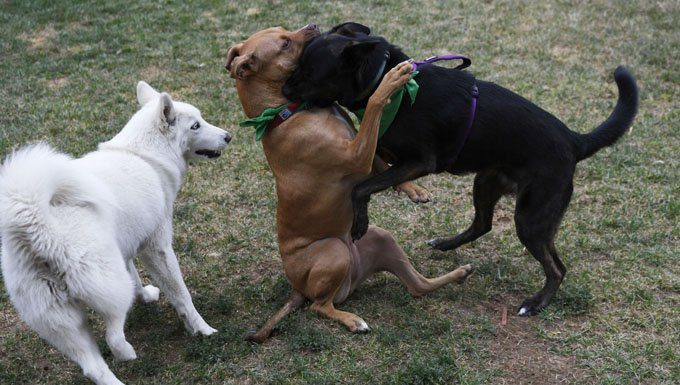
(Picture Credit: Andy Cross/The Denver Post via Getty Images)
Your yard and gardens are wonderful for relaxing, playing and entertaining. However, they can also be dangerous for your pets. It’s our job as pet parents to make sure the places where our dogs play, explore, and go potty are as safe as possible.
Dogs and other animal companions end up in veterinary emergency rooms every year from hazardous contact with insecticides, weed killers, and pet-toxic plants among other dangers in our yards.
Here are a few things to keep in mind when making your yard more pet-friendly.
1. Avoid Toxic Plants
When designing and planting your yard, it’s a good idea to keep in mind that many popular outdoor plants are poisonous.
For instance, sago palms, azaleas, and rhododendrons are toxic to dogs and cats. Sago palm and other members of the cycad family, as well as wild mushrooms, can cause liver failure, while rhododendrons, lilies of the valley, oleander, azaleas, rosebay, kalanchoe, and foxglove all affect the heart.
Keep your pets out of other yards if you’re not sure what kinds of plants or flowers they have. Keeping your pet off the lawn that you are not familiar with including parks and other public yard areas will help keep your pets happy and healthy.
2. Think Twice About Insecticides
(Picture Credit: Jason Sykes / EyeEm/Getty Images)
Insecticides are NOT meant for four-legged animal consumption. Always store pesticides in areas inaccessible to pets and children.
Make sure to read the manufacturer’s label carefully for proper usage and storage. Some fertilizer, herbicides, granules, sprays, and insecticide baits may be needed to keep our yards healthy, but the ingredients are not good for our pets and children.
The most dangerous forms of pesticides include snail bait with metaldehyde, systemic insecticides that contain disyston or disulfoton, fly bait with methomyl, mole or gopher bait with zinc phosphide, and most forms of rat poisons. If you must use them, make sure your dog cannot access areas where you’ve spread chemicals until they’ve dissipated.
Rely on pet-safe options if you can find them, and follow instructions on the package regarding pets.
3. Fertilizers Are For Plants, Not Animals
As for fertilizer or plant food, these help to keep our yards healthy and green, but can cause destruction in our pets’ digestive tracts.
Make sure to follow instructions carefully and allow the appropriate waiting period before letting your pet run wild outside. Pets who ingest large amounts of fertilizer can experience stomach upset and may suffer life-threatening gastrointestinal obstruction.
4. Keep Compost Out Of Reach

(Picture Credit: ands456/Getty Images)
Food and garden waste, also called compost, make excellent additions to garden soil, but depending on what you’re putting into your compost, some foods can create problems for your pets.
Coffee, moldy food, and certain types of fruits and vegetables, including some stems, leaves, and seeds are toxic to your dogs and cats.
5. Pick Safe Mulch
Like chocolate, cocoa mulch can pose problems for our pets. Cocoa mulch is a by-product of chocolate production used in landscaping. Pets love its sweet smell, and depending on the amount ingested, it can cause a range of symptoms. These include sickness, vomiting, diarrhea, muscle tremors, elevated heart rate, hyperactivity, and seizures.
Try using other alternatives, such as cedar, shredded pine, or hemlock bark, and always read and follow all instructions–plus, supervise your pets in the yard.
6. Put The Tools Away

(Picture Credit: Willowpix/Getty Images)
You should properly store all garden tools in a safe area, not randomly on the ground. They may seem like no big deal, but rakes, tillers, hoes, and trowels can be hazardous to pets and children.
Injuries to eyes, paws, or noses from rusty, sharp tools also create a danger for tetanus if your pet punctures their skin.
7. Reduce Flea And Tick Hiding Spots
Fleas and ticks lie in wait, hidden in tall brush and grass in your yard, so it’s important to keep lawns mowed and trim.
Fleas cause scratching, possible hair loss, tapeworms, scabs, hot spots, and anemia from blood loss in both dogs and cats. Ticks can cause similar problems and can lead to complications from diseases such as Rocky Mountain spotted fever, Lyme disease, and Babesia.
Do you take precautions to keep your yard safe for your pets? What tips do you have for other animal lovers who share their yard with furry friends? Let us know in the comments below!